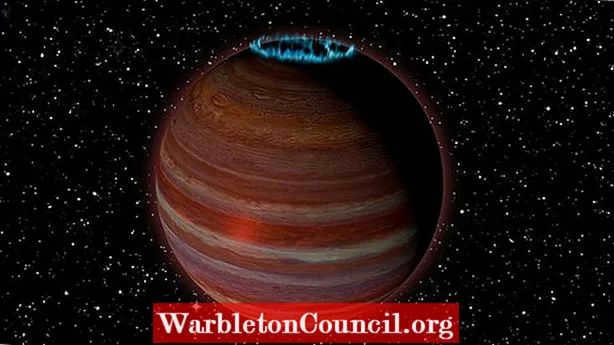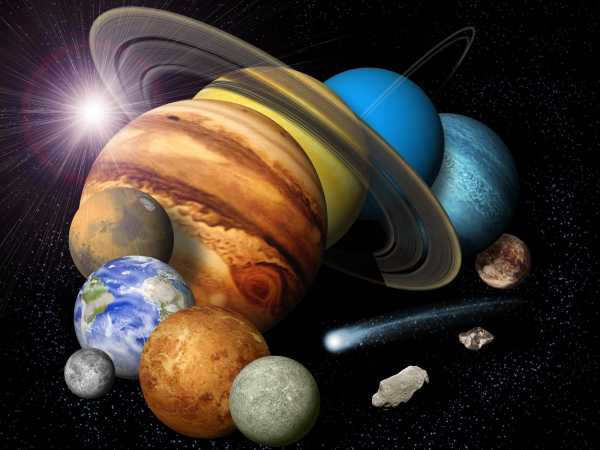
The solar system consists of a collection of planets orbiting around the Sun, a star that is significantly larger and more massive than them. In addition to the planets, the solar system also comprises their moons, asteroids, comets, and numerous meteoric components.
The Star
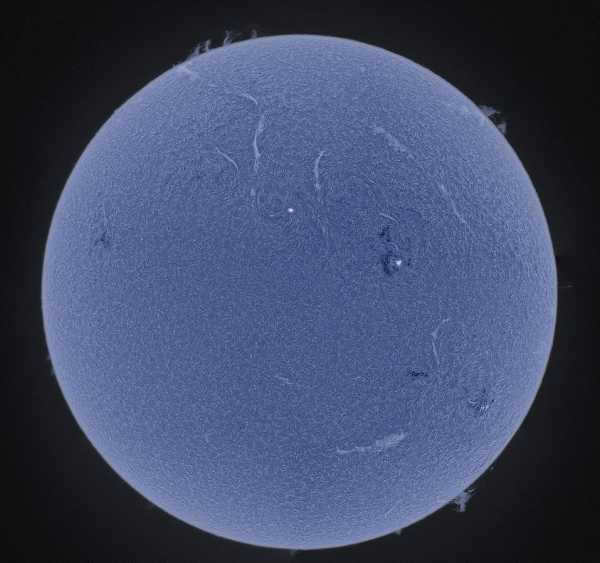
An image of the Sun captured using the H-alpha line is displayed here.
It is important to note that while the Sun is not the largest or hottest star in the Universe, it holds a significant significance for us. Without the Sun, the solar system, its planets, and the life forms inhabiting them would not exist. Deep within the Sun, nuclear reactions occur, converting hydrogen into helium and releasing an immense amount of heat. The surface temperature of the Sun reaches approximately 5000 ° C. Despite its strong gravitational pull, the Sun emits charged particles known as solar wind. These particles are reflected by Earth’s magnetic field, and at the poles of our planet, they can still be observed as the aurora borealis.
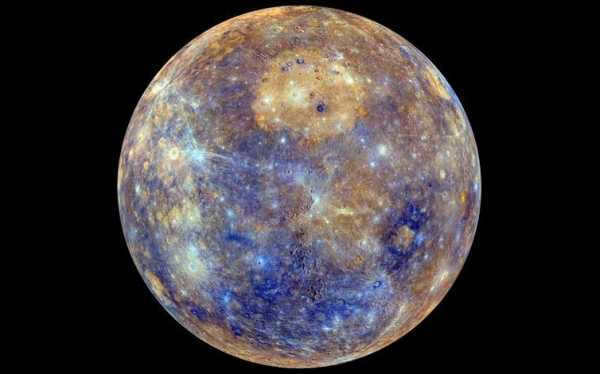
Mercury, as seen in the image captured by the MESSENGER probe.
Being the tiniest planet in our solar system, Mercury lacks any natural satellites. In just half of its days, Mercury completes a full orbit around the Sun. The planet boasts an immense metallic core, while its crust is relatively small and adorned with an abundance of craters. As for its atmosphere, Mercury possesses an incredibly rarefied one, almost bordering on non-existence.
Planet Venus
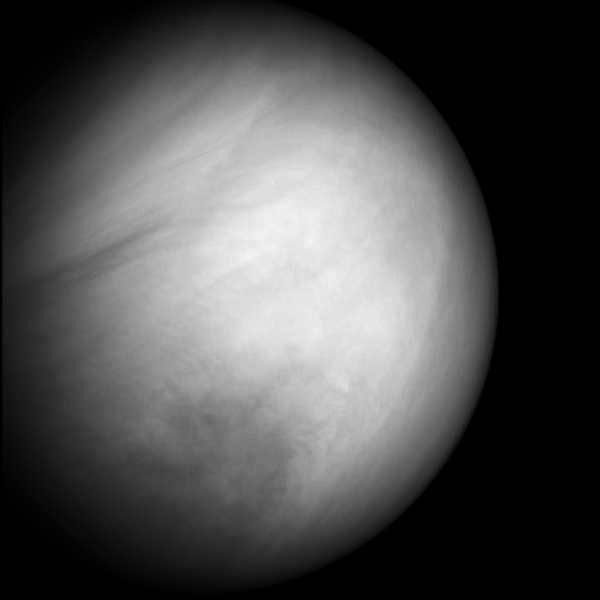
This image of Venus was captured by the MESSENGER spacecraft.
Venus is widely known for its extremely high surface temperature, reaching around 480 degrees Celsius. This characteristic makes it the hottest planet in our solar system. Moreover, Venus possesses an incredibly dense atmosphere primarily composed of carbon dioxide. Additionally, violent thunderstorms of greater intensity than those on Earth occur within the atmosphere of this celestial body. It is worth mentioning that Venus does not have any natural satellites.
The Earth
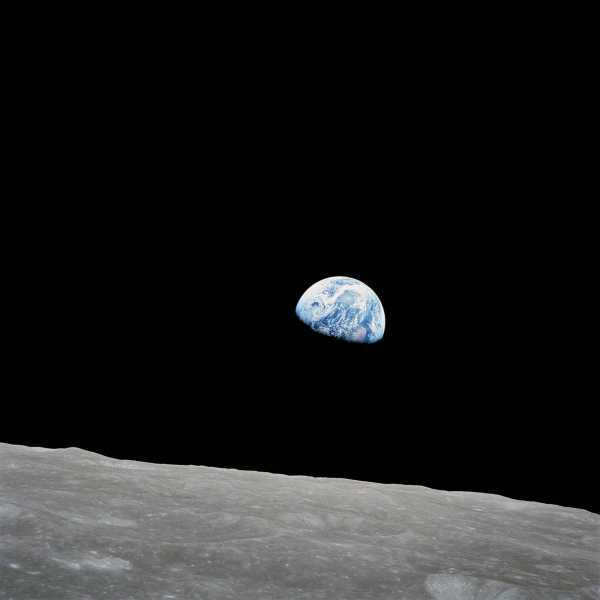
Earth is the sole planet in our solar system that boasts a vast ocean covering approximately 70% of its surface. It also stands out with its distinctive atmosphere, containing a significantly higher oxygen content compared to any other planet. Additionally, we have the Moon, the largest satellite among the terrestrial group of planets, which includes Mercury, Venus, and Mars, as previously mentioned.
The Red Planet
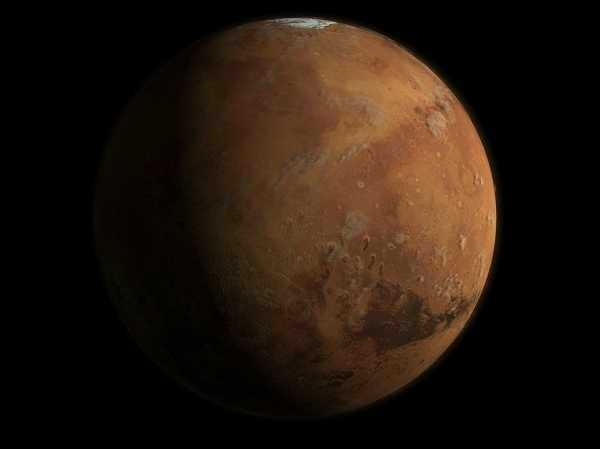
Mars is the final planet in the Earth group. The planet’s surface is of great interest due to the presence of channels, which suggest that water existed on Mars in the past. Additionally, Mars is home to Olympus, the tallest volcano in the entire solar system. The surface of Mars has a distinct red hue, which is attributed to its high iron oxide content. Mars is also accompanied by two satellites, Phobos and Deimos.
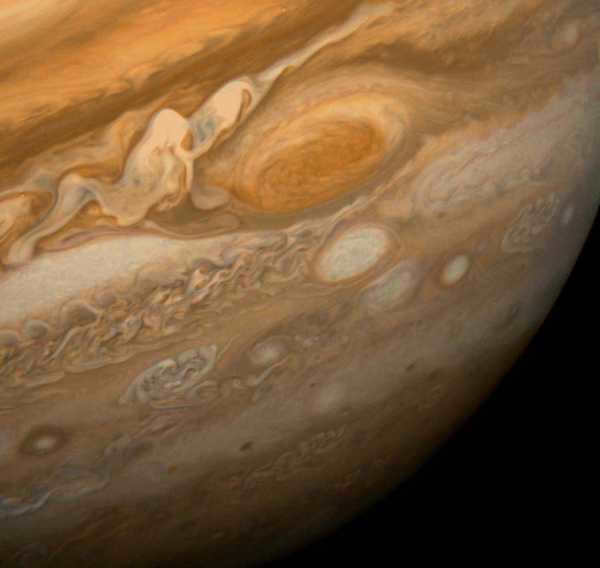
Jupiter, Photographed by Voyager 1
The largest planet in our solar system, Jupiter has the greatest number of moons. Among its most well-known satellites are the Galilean moons. One fascinating feature of Jupiter is the Red Spot, a massive storm on its surface. Scientists believe that it is a gigantic vortex in Jupiter’s atmosphere, with winds reaching speeds of over 300 km/h. This storm has been spinning for centuries.
The planet Saturn
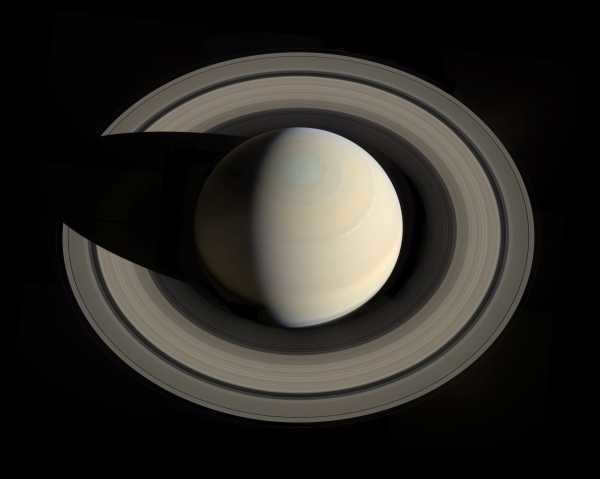
Saturn, a compilation of 8 images taken by the Cassini spacecraft
It possesses the second largest volume and number of moons among all the planets, as well as the second largest distance from the Sun among the gas giants. Jupiter holds the top spot in these categories. The gas giants also include Uranus and Neptune. Saturn’s distinctive feature is its magnificent ring system, which can be easily observed through a regular telescope.
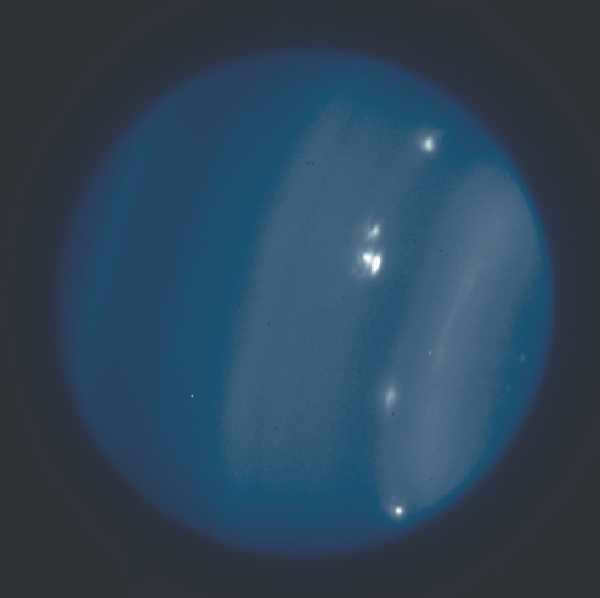
Here is an infrared image of Uranus taken by the KEK telescope.
Similar to Venus, Uranus is a planet that rotates in the opposite direction. However, what makes Uranus even more unique is its unusual position in relation to its orbit – it is tilted at an angle of 98 degrees. Out of all the planets in the solar system, Uranus is the coldest, with a minimum temperature of -225 degrees Celsius. Additionally, Uranus is accompanied by 27 satellites.
Neptune
is the eighth and farthest known planet from the Sun in the Solar System. It is the fourth-largest planet by diameter and the third-largest by mass. Among the gaseous planets in the Solar System, Neptune is the most dense. Neptune is 17 times the mass of Earth and is slightly more massive than its near-twin Uranus, which is 15 times the mass of Earth and slightly smaller than Neptune.
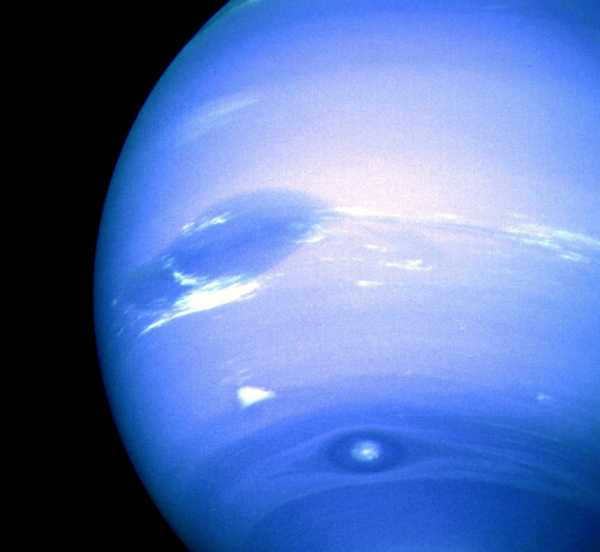
Neptune, as captured by the Voyager -2 spacecraft
Neptune shares a similar composition with Uranus, and the abundance of ice in their makeup has earned them the title of “ice giants”. The planet’s atmosphere, like that of all gas giants, consists mainly of hydrogen and helium. The presence of methane in its composition gives Neptune its distinct blue hue. Known for its powerful winds, Neptune boasts wind speeds that can exceed 700 km/h. Additionally, Neptune is orbited by 13 satellites.
Comparative sizes of celestial bodies in the universe

The existence of planets commenced billions of years ago. Researchers estimate their age to be roughly 5 billion years. During this period, a gas cloud underwent compression, transforming into a colossal core, thus giving birth to our Sun. Adjacent to it, diverse celestial debris orbited and amalgamated, eventually shaping into planets. Initially, these celestial bodies were scorching, akin to the Sun, but eventually, they cooled down and solidified, resulting in the formation of planets.
Our abode is situated on planet Earth, which is an integral part of the renowned solar system, with the Sun positioned at its core. Earth does not exist in isolation within the solar system; rather, it is accompanied by a total of eight planets.
Incidentally, the Sun is not a planet, despite what many people believe. It is a massive star situated at the heart of our solar system. Without it, life on Earth would be impossible as it provides warmth and light. Although we perceive it as yellow, the Sun is actually white.
All the planets and other celestial bodies orbit the Sun along specific paths. The Sun’s gravitational pull keeps them in motion. The time it takes for a planet to complete one full orbit around the Sun is known as a year, while the time it takes for a planet to rotate once on its own axis is called a day. On Earth, a year is 365 days and a day is 24 hours. However, for planets that are farther away from the Sun, their revolutions can take several Earth years. Now, let’s delve into the unique characteristics of each of the eight planets in our Solar System.
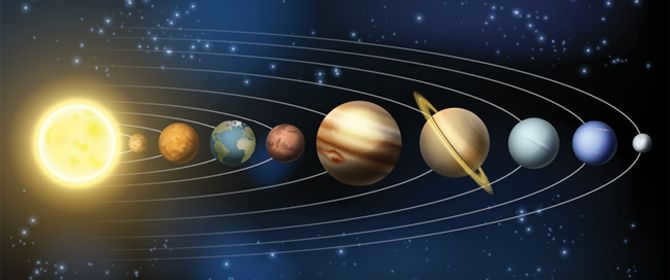
Characteristics and fascinating information about the planets
The characteristics of each planet in the solar system are extraordinary. Each planet is a marvel of the universe and they are all remarkably distinct from one another. Moreover, the intriguing facts about the planets captivate both adults and children in the realm of the unknown cosmos, stimulating the imagination and paving the way for new aspirations.
The vastness of outer space is incredibly alluring. It operates under entirely different laws, making everything incredibly complex. This is why we approach the study of this subject with such reverence, gradually uncovering more and more about the stars and planets. Numerous facts have the potential to astonish. Let’s explore the planets of the solar system in the order of their proximity to the Sun.
Split 4 minor planets and 4 colossal planets. The appellations of the planets are bestowed in tribute to archaic deities. An exclusionary instance is our Earth.
Mercury
The foremost planet in proximity to the sun. It is remarkably minute and completes an orbit around the Sun the swiftest. It is extremely scorching during daylight hours and inconceivably frigid at nighttime. Temperature fluctuations range from +350 degrees to -170 degrees.
Fascinating fact: the objects we are accustomed to would possess significantly less weight on Mercury compared to Earth. This is attributable to the diminished gravity on Mercury arising from the planet’s dimensions. And if life were to exist here, its denizens could witness sunrise and sunset up to 4 times daily.
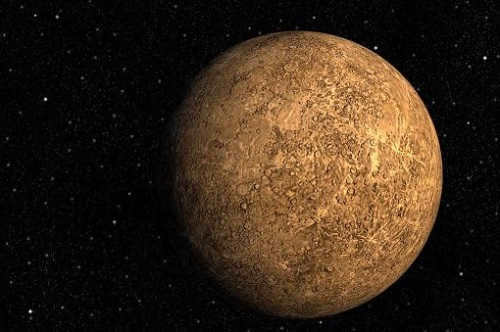
Venus
Venus is the most luminous planet in the solar system. It is also known as the Morning Star.
The planet is a scorching, rocky wasteland. Venus is exceptionally challenging to investigate due to its highly cloudy atmosphere. It lacks the essential oxygen that we rely on, consisting of 95% carbon dioxide. The temperature on Venus reaches a sweltering 450 degrees.
Venus is symbolically regarded as Earth’s sibling. Both planets share similarities in size, chemical composition, weight, and density. However, there is one notable distinction: Venus cannot support life! Its surface is far too hot, and its atmosphere, composed entirely of carbon dioxide, is highly toxic.
Another intriguing fact is that all the planets orbit in the same direction, except for Venus. It moves in the exact opposite direction.
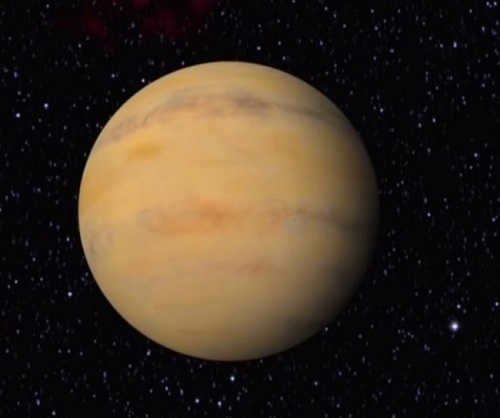
Earth
Our world, being the sole inhabited celestial body at present, is more than 4.5 billion years old. It is on this planet that the most precious resource for the existence of life, water, can be found, and it is thanks to this vital element that life appeared here approximately 3.5 billion years ago. Moreover, when viewed from outer space, Earth is undeniably the most stunning!
Our planet is accompanied by a natural satellite – the Moon, which becomes visible to us every night during clear weather conditions.
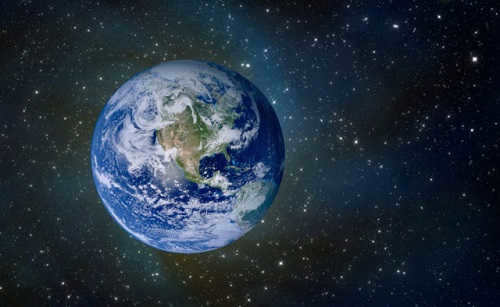
Mars
Mars, being in close proximity to Earth, is extensively studied and researched. The planet derives its name from the Roman god of war. Known for its reddish appearance, Mars has a surface that is predominantly red in color.
Mars showcases a plethora of fascinating geological features, including volcanoes, valleys, craters, and deserts. It boasts immense mountains, unmatched by any other planet in size. Additionally, Mars is home to massive deep canyons, a feature not found on any other celestial body.
With a height of over 21 kilometers, Mars is home to the tallest mountain in the entire solar system. This mountain is an inactive volcano that is covered in snow and ice. In the event that all the ice on Mars were to melt, the entire planet would be submerged in water.
Mars possesses only two moons, Phobos and Deimos, which are widely known among scholars. However, these moons are so small that most cities on Earth are significantly larger than them.
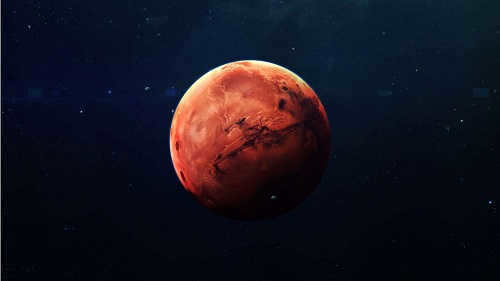
Jupiter: The Giant Planet
Jupiter, the largest planet among all the giants, is an extraordinary celestial body. It possesses a remarkable weight that is three hundred times greater than that of our own planet. Furthermore, Jupiter claims the record for having the most number of satellites, with a total of 69. Unlike other planets, Jupiter is composed entirely of gas, lacking a solid surface.
The gravitational force exerted by Jupiter is hundreds of times stronger in comparison to that of other planets. This immense gravitational pull acts as a magnet, attracting nearby space objects and preventing millions of comets from reaching planet Earth.
One of the most prominent features of Jupiter is its massive storm, often referred to as the “Great Red Spot.” This colossal storm has been active for centuries, constantly changing in direction and size as it roams around the planet.
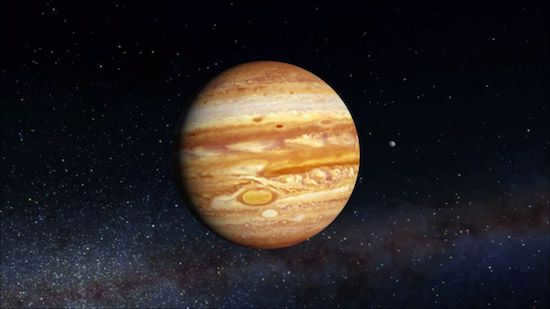
Saturn
Saturn is a planet that is known for its romantic and unforgettable charm. One fascinating characteristic of Saturn is its stunning rings, which consist of a collection of rocks, ice, and dust that orbit the planet in a unified manner. Additionally, Saturn is a gas giant, composed primarily of hydrogen and helium. It is interesting to note that despite being the second largest planet in our solar system, Saturn is surprisingly lightweight. This is due to its predominantly gaseous composition. Furthermore, Saturn boasts an impressive number of satellites, with a total of 62 known moons orbiting the planet.
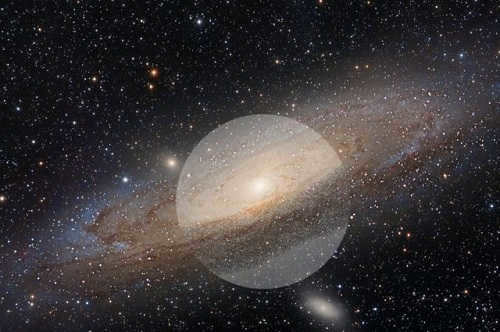
Uranus – The Unique Planet
Uranus, known for its peculiar rings that are visible at certain times, is a fascinating planet that belongs to the giant planets category. It is also one of the coldest planets in our solar system, with a temperature of about -220 degrees. What makes Uranus even more intriguing is its unusual orientation – it moves as if lying on its side. Sitting at a considerable distance from the Sun, Uranus has 27 satellites orbiting around it.
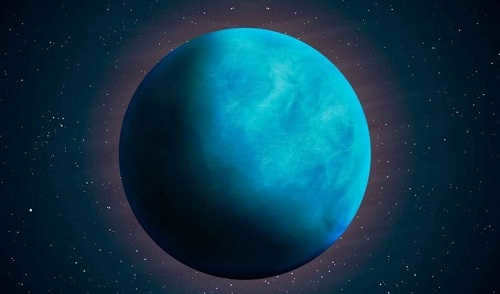
Neptune
Neptune, the celestial body that was first unveiled through mathematical computations rather than direct observation. If one were to embark on a hypothetical journey to visit Neptune, it would necessitate a minimum of 12 Earth years!
This mesmerizing planet is renowned for its striking blue hue and is plagued by ferocious winds. The wind velocity on Neptune has the potential to surpass an astonishing 2000 kilometers per hour!
Neptune is also adorned with a collection of six rings and is enveloped in a frozen ice layer.
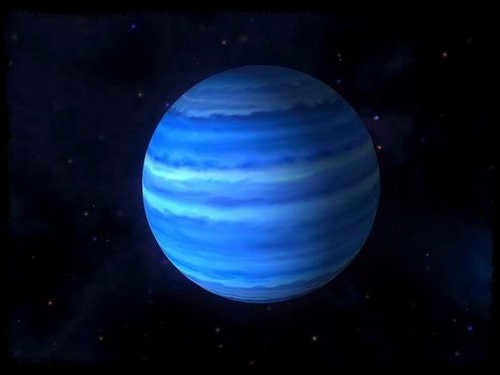
The Dwarf Planet, Pluto
An interesting celestial body to mention is Pluto. Once classified as a planet, Pluto is actually the smallest planet in our solar system, being six times smaller than the moon. Composed of a combination of rock and ice, Pluto is situated the farthest away from the sun. However, in 2006, Pluto was reclassified as a Dwarf Planet.
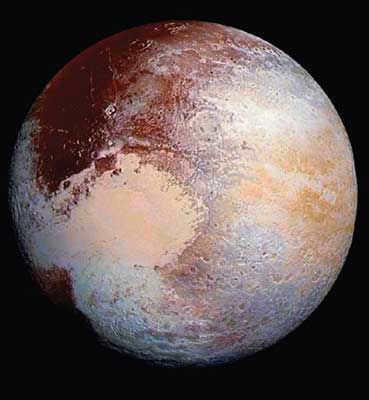
This video contains a plethora of astonishing and captivating information regarding the planets that comprise our solar system:
Instead of a conclusion
Instead of concluding, if the child shows interest in your story and astronomy in general, you can continue by telling them about stars and constellations, comets, asteroids, satellites, and galaxies. Children are particularly interested in learning about the North Star and other well-known constellations. Now you have an idea of what to share with children about the planets.
You can also suggest that they reinforce their understanding by watching a cartoon about the planets in our solar system:
Check out the other articles in our extensive collection of space-related articles for children:
The possibilities for space exploration are infinite, especially considering that astronomy is an ever-evolving field of study. Every day, scientists dedicate themselves to examining the cosmos, uncovering new planets, and analyzing their unique features, gradually unraveling the enigmatic nature of the universe to the world.
We hope you enjoy your captivating journey through space!
Come and join us as we explore the captivating world of the “Workshop on the Rainbow” video channel.
Throughout history, humans have been captivated by the allure of faraway stars and the enigmatic worlds that lie beyond. The sheer vastness of our Universe makes it impossible to fathom the number of stars, let alone the multitude of planets that reside within space. Nevertheless, scientists remain undeterred, tirelessly searching for and uncovering evidence of new celestial bodies. This endeavor is aided by advancements in physics, the advent of sophisticated telescopes, and humanity’s ventures into outer space.
Our Solar System’s Planets
The discussion surrounding the planets came about after the debunking of myths concerning the Earth being flat and the realization that stars are objects similar to the Sun. Mars, Venus, Mercury, Jupiter, and Saturn were already known in ancient times, but they were believed to be satellites of our planet according to the geocentric model. As they moved across the sky and were visible with basic telescopes, their movements were observed and studied. It wasn’t until the 16th century that scientists were able to accurately place these six known celestial bodies in their orbits around the Sun, following the heliocentric model. Subsequently, the discovery of other planets occurred as more advanced telescopes were developed.
The first four objects in our solar system, which are Mercury, Venus, Earth, and Mars, belong to a group known as the “terrestrial group”. These planets are made up of refractory minerals called silicates and metals. They have a solid outer layer and atmospheres, except for Mercury.
Jupiter and Saturn, on the other hand, are classified as “gas giants” and are primarily composed of hydrogen and helium. Uranus and Neptune, on the other hand, are known as “ice giants” and are smaller in size compared to the gas giants. These planets have methane and carbon dioxide in their atmospheres.
Scientists have conducted extensive research on the planets in our solar system and have gained a significant amount of knowledge. However, there are still many unanswered questions, and astronomers are constantly working to expand their understanding.
Exploration of Exoplanets
With a constant curiosity about the universe, scientists are continuously discovering new celestial bodies to investigate. For centuries, they have been searching for unknown planets within our solar system or on its outskirts. Throughout the past three centuries, countless names have been proposed to describe these hypothetical planetary objects – Planet X, Theia, Vulcan, Phaeton, Tyhe. However, confirming the existence of these sought-after bodies has proven elusive.
Scientists are also exploring the vast expanse of outer space, where counting the number of planets is unlikely to be achieved in the foreseeable future. Currently, the study of these objects is limited to our own Milky Way Galaxy, as other galaxies are located at significant distances from Earth, making it impossible to observe specific elements.
Astronomers today estimate that there are between 200 and 400 billion stars in the Milky Way galaxy. Through careful observation, they have discovered planetary systems around some of the most suitable and convenient stars. This leads to the conclusion that there are at least 100 billion planets in the galaxy, a number that is likely much larger than the number of stars. However, it is important to consider several factors that may affect this estimate:
- The vast distances involved make it impossible to accurately determine the number of satellites around each star.
- Currently, we can only observe small planets in the closest star systems, while larger planets like Saturn and Jupiter are more easily detectable.
- The Kepler space observatory, operated by NASA, has identified over 2000 potential planets. However, these findings still need to be confirmed and named by Earth-based telescopes.
Exoplanets are space planets that are not included in the solar system. By the start of 2020, there had been a total of 4160 exoplanets found (around 3090 planetary systems had been examined, and approximately 25% of them had multiple objects discovered). These satellites are given names based on the host star and a lowercase letter from the Latin alphabet, beginning with “b”. This naming convention is used due to the impracticality of assigning unique names to such a large number of objects.
How do astronomers conduct studies on distant planets?
Observing exoplanets directly with the naked eye is impossible due to their distance. When we hear about the discovery of new planets in the universe, it means that they have been detected using specialized astronomical methods. The images of exoplanets that we see online are actually artistic renderings. Astronomers have never personally observed an exoplanet with their own eyes! Instead, they gather data about the core, atmosphere, mass, and size of exoplanets using enormous telescopes:
- Space telescopes: COROT, Kepler, Gaia, TESS (these observatories are specifically designed to search for planets outside of our solar system)
- Ground-based telescopes: SuperWASP, HATNet, HARPS, Keck Observatory
Scientists have utilized a variety of techniques to discover all the planets in space, ranging from directly observing the star and analyzing its behavior to employing advanced technologies and performing complex calculations (such as the Doppler method, transit method, astrometric method, and gravitational microlensing method).
In the coming years, astronomers aspire to uncover the enigmas of the universe and locate Earth-like planets by exploring space and investigating the planets within its observable region.
“Infernal” and extraordinary celestial bodies
Thanks to the advancements in scientific research, astronomers are now able to not only observe the existence of various planets but also gather valuable information about them. Listed below are some of the most astonishing, terrifying, and unconventional planets found in space:
- Gliese 436 b – this planet has a short orbital period of 2.5 Earth days and boasts a scorching surface temperature of 300°C. What makes it even more fascinating is the fact that the entire planet is composed of water in a state of hot ice, which defies the laws of evaporation;
- Korot 7 b – dubbed the most “hellish” planet ever discovered, this celestial body has an incredibly short orbital period of 20 hours. The side of the planet facing its star is heated to a blistering 2600°C, resembling a fiery ocean of lava, while the unilluminated side is constantly bombarded by cooled rocks and stones;
- J1407 b – possesses a massive ring system that surpasses Jupiter’s by several orders of magnitude (with a radius of 90 million km);
- GJ 1214 b – stands out as the sole known oceanic planet, consisting predominantly of water, including its atmosphere;
- 2MASS J2126-8140 – holds the distinction of being the most isolated exoplanet discovered, situated a staggering 1 trillion km away from its star;
- HD 209458 b – goes by the moniker “Osiris” and is notorious for its ongoing process of “vaporization”;
- Kepler-16 b – distinguished as the first exoplanet found to orbit a binary star system.
The array of fascinating planets within the universe is boundless, ensuring an infinite list of discoveries.
Are there any planets like Earth in the Universe?
Finding Earth-like planets in the Universe that could potentially support human life and serve as a potential habitat for extraterrestrial organisms has proven to be a challenging task. In order to meet the criteria for this designation, an exoplanet must possess the following characteristics:
- It must maintain a suitable distance from its host star;
- It must have a stable and regular orbit;
- It must be located in a safe region of its galaxy;
- It must have water, an atmosphere, and a magnetic field.
Based on estimates, it is believed that out of the 100 billion planets in the Milky Way, more than 5 billion of them could potentially resemble Earth.
Currently, astronomers have identified over 200 exoplanets that meet these criteria and could potentially resemble Earth. However, studying these planets is challenging due to their distance and size.
- One such exoplanet is Kepler 186b;
- Let’s talk about Tau Kita f/e;
- Gliese 832 c;
- Kepler 296 f;
- KOI 3010.01;
- HD 85512 b;
- Kepler 22 b;
- Kepler 438 b;
- Proxima Centauri b.
All of the mentioned exoplanets possess remarkable characteristics that make them potential candidates for colonization or as a source of extraterrestrial life.
Due to the vast number of discovered planets in the universe, it is challenging to cover all of them in a single article. Each exoplanet found by scientists showcases unique properties that leave us in awe. Thanks to the diligent work of astronomers, we now have a better understanding of the history of our universe and solar system. It is possible that one of the already discovered worlds is home to humanoid beings who, like us, gaze at the sky with wonder and seek answers to the mysteries of the universe.
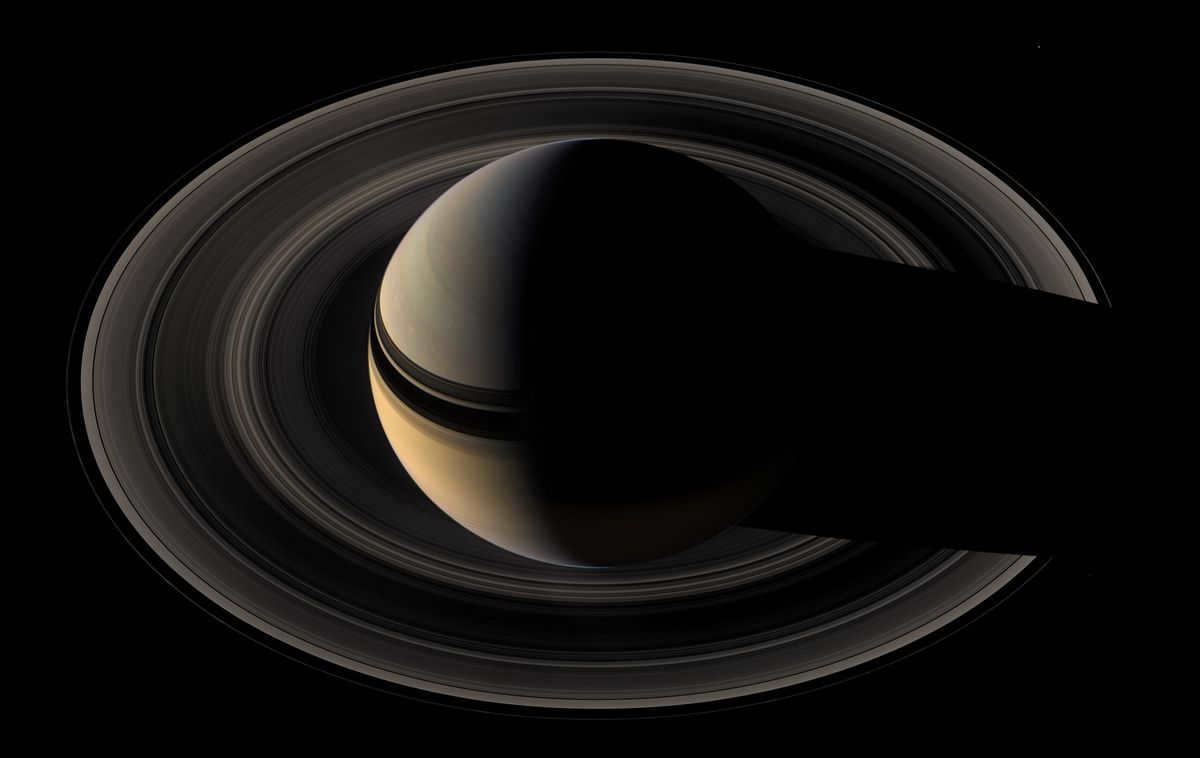
In the present day, it is common knowledge that the United States achieved a significant milestone in the realm of space exploration by sending its astronauts to the Moon. The initial manned spacecraft to accomplish this feat in 1969 was the American spacecraft Apollo 11, which carried a team of astronauts including Neil Armstrong, Michael Collins, and Buzz Aldrin.
Many of you may recall the iconic image of Armstrong proudly planting the U.S. flag on the lunar surface on July 20, 1969. The United States government celebrated this moment as a triumphant victory over the Soviet Union in the space race. However, throughout history, there have been speculations and assumptions surrounding this event, leaving some critics and scientific minds questioning the authenticity of the Moon landing. While there is a caste of skeptics and critics who doubt the American astronauts actually set foot on the Moon, let us leave this skepticism to their own conscience.
The Soviet Luna-2: the Pioneer on the Moon
On September 13, 1959, the Soviet spacecraft Luna-2 achieved a groundbreaking feat by becoming the first ever spacecraft to land on the Moon. This remarkable achievement took place a whole 10 years before American astronauts set foot on the Earth’s satellite. Sadly, it is disheartening that the contributions of Soviet designers, physicists, and cosmonauts in the exploration of the Moon are not widely recognized.
Furthermore, an immense amount of effort was put forth, and the desired outcomes were accomplished well ahead of Armstrong’s triumphant journey. The USSR’s flag was planted on the Moon’s surface a whole ten years prior to a human stepping foot on it. On September 13, 1959, the Luna-2 space station successfully arrived at the celestial body that bears its name. The world witnessed the historic moment when the Luna-2 spacecraft became the first human-made vehicle to touch down on the Moon, specifically in the vicinity of the Sea of Rains near the Aristillus, Archimedes, and Autolycus craters.
A question that naturally arises is: if the Luna-2 spacecraft reached the Earth’s satellite, then there must have been a Luna-1? Indeed, there was, but its launch, which occurred slightly earlier, was not as successful and it flew past the Moon… However, even with this outcome, the flight of the Luna-1 spacecraft yielded significant scientific results:
- The first direct measurements of solar wind parameters were conducted using ion traps and particle counters.
- By utilizing the onboard magnetometer, the Earth’s outer radiation belt was detected for the first time.
- It was discovered that the Moon lacks a significant magnetic field.
- Luna-1 became the world’s first spacecraft to reach escape velocity.
The participants of the launch were honored with the Lenin Prize, and although their names were unknown to the public, their collective mission to bring honor to their country took precedence.
Apollo 12
The launch of the second manned expedition to the Moon occurred on November 14, 1969, with the satellite being reached on November 19.
A glimpse of the Moon’s surface as seen through the window of the landing module.
Astronauts Pete Conrad and Alan Bean had the privilege of walking on the lunar surface, while Pilot Richard Gordon awaited their return in orbit.
Alan Bean emerges from the lunar module.
This landing took place approximately 1,500 kilometers away from the Apollo 11 landing site. During their time on the Moon, the astronauts took photographs, collected soil samples, and conducted several televised communications with Earth.
Furthermore, the Apollo 12 crew demonstrated their remarkable precision in landing. They successfully touched down a mere 185 meters away from the unmanned spacecraft Servier-3, which had landed on the Moon two years prior. The astronauts were assigned the mission of disassembling certain components of the aforementioned vehicle and returning them to Earth for analysis on the long-term effects of lunar exposure.
The third lunar landing mission
The crew of Apollo 14 consisted of Alan Shepard, Stuart Russa, and Edgar Mitchell. Alan Shepard and Edgar Mitchell successfully touched down on the lunar surface. During their stay on the moon, the astronauts made two excursions, spending a total of 9 hours and 23 minutes exploring.
Mitchell and Shepard managed to collect 42.8 kilograms of lunar soil samples. Extensive analysis of these rocks in laboratories back on Earth revealed that they are approximately 4.51 billion years old.
In an intriguing experiment, about 500 seeds from five different species of trees were taken to the Moon aboard the Apollo 14 mission. Upon their return to Earth, the seeds were carefully germinated in nurseries operated by the U.S. Forest Service. The resulting seedlings were then distributed and planted across various American states, universities, and NASA centers. Unfortunately, there is no comprehensive record of the exact locations where these “moon trees” were planted. However, as of February 2016, a total of 75 such trees had been discovered in 25 different states.
Crew commander David Scott and lunar module pilot James Irwin spent just under 67 hours on the Moon, totaling nearly three days. The astronauts successfully completed three trips to the lunar surface, with a combined time of 18 hours and 33 minutes. This mission marked the debut of the first-ever lunar rover, which they used to cover a distance of 27.9 kilometers.
While on the Moon, the crew also focused on scientific research, collecting a remarkable 77 kg of lunar rock samples and conducting various experiments.
Furthermore, as part of their expedition, the astronauts left a lasting tribute on the Moon’s surface. They placed a commemorative plaque called “Fallen Astronaut” and an aluminum sculpture depicting an astronaut in a spacesuit. This plaque served as a memorial for the 8 U.S. astronauts and 6 Soviet cosmonauts who had already passed away or were nearing the end of their lives at the time.
Before departing lunar orbit, the astronauts released a small artificial satellite of the Moon from the scientific instrument module with the purpose of measuring its magnetic and gravitational fields.
The Apollo 16 Mission
John Young and Charles Duke were the subsequent astronauts to explore the lunar surface, while Thomas Mattingly awaited their return in orbit. Interestingly, this mission may not have taken place. Upon entering lunar orbit, the control and maintenance module’s engine experienced a malfunction, causing a delay of 6 hours in the landing. During this time, the spacecraft completed 11 orbits around the Moon. Fortunately, the issue was eventually resolved and Apollo 16 was given the green light to proceed with its planned landing. Upon touchdown, it was discovered that the landing module was positioned on elevated ground and slightly tilted.
The astronauts spent a total of 71 hours on the moon, specifically from April 21 to April 23, 1972. During their time there, they made three separate trips to the surface, which totaled 20 hours and 14 minutes. Additionally, they traveled a distance of 26.7 kilometers using a moonwalker, setting a new record for the fastest lunar vehicle at 18 kilometers per hour.
While on the lunar surface, the astronauts delivered various scientific equipment, including a cosmic ray detector, an ultraviolet camera, and seismometers.
Furthermore, the astronauts conducted a series of explosive tests to analyze the lunar soil’s subsurface structure (regolith) and the speed of sound propagation within it. This experiment involved the use of two dozen explosive charges and a mortar.
During the Apollo 16 mission, astronauts gathered and transported to Earth 96.7 kilograms of lunar soil samples. Additionally, the astronauts brought back to Earth 3,793.5 meters of still and motion picture film captured on the Moon and in lunar orbit.
Venus 7
The Soviet AMS Venera 7 became the first spacecraft to achieve a gentle landing on the surface of Venus. Following its landing on December 15, 1970, Venera 7 also made history as the first spacecraft to touch down on another planet’s surface.
Upon entering the planet’s atmosphere, the AMS transmitted data for 53 minutes, including 20 minutes during which the station was actively operating on the surface of Venus.
Thanks to the data acquired, Soviet scientists were able to ascertain the correlation between the altitude of the apparatus and the temperature variations in the atmosphere (ranging from 25 degrees Celsius to approximately 475 at the surface). Additionally, they were able to determine the atmospheric pressure on the surface of Venus, which was estimated to be around 90 atmospheres.
It is important to mention that the initial photographs of the Venusian surface were captured at a later stage, but still as part of the Soviet Venera program. The first camera to photograph Venus was the AMS Venera 9, which successfully landed on the planet on October 22, 1975.

The Viking program
As part of the Viking program in 1975, the United States dispatched two vehicles to Mars with a short time interval between them. Similar to Viking-2, “Viking-1” comprised of an orbiter and a descent module. These landers were equipped with a diverse range of scientific instruments to investigate the Martian soil and atmosphere, in order to find an answer to one of the most crucial questions – the existence of life on Mars.
On July 20, 1976, Viking 1 achieved the historic milestone of being the first spacecraft to successfully land on the Martian surface. In September, Viking-2 also landed on the Red Planet, although not as smoothly – its engines inadvertently scorched the Martian soil it was intended to study, and one of the module’s supports became lodged on a rock, resulting in the vehicle tilting.
In the subsequent years, the Vikings carried out numerous scientific experiments and transmitted countless images of the Martian surface back to Earth. Specifically, they analyzed the composition of the soil and discovered significant amounts of iron and silicon, as well as the presence of sulfates. However, their search for biological samples was not successful.
Viking-1 surpassed its planned lifespan and only experienced a failure in 1982, which was attributed to the mistake of a NASA employee. Unfortunately, this error resulted in the loss of communication with the spacecraft, without any possibility of restoring it. On the other hand, Viking 2 continued to function on the Martian surface until 1980.

Instant Messaging Application
Mercury has traditionally been given low priority by spacefaring nations. Throughout the entire history of astronautics, no spacecraft has ever landed on its surface, and only two vehicles have been sent to study it, both of which were under the auspices of NASA.
The Messenger mission, which became the first ever to orbit Mercury in March 2011, was particularly successful.
Building on the data obtained by Mariner 10 about Mercury, Messenger conducted three flybys of the planet in 2008-2009 before entering its orbit.
The investigation carried out by Messenger has produced a plethora of invaluable scientific information. For instance, numerous top-notch pictures of the surface of Mercury enabled the creation of a comprehensive three-dimensional map of the planet. Additionally, the AMS scientific equipment revealed a surprising discovery of ice at the poles of the nearest planet to the Sun. Furthermore, “Messenger” was able to determine that the magnetic field of the planet is significantly higher at the north pole compared to its center.
Furthermore, the surface mapping of the planet has unveiled enigmatic black spots that are scattered across the entire planet. It is presumed that these are minuscule meteorite craters, although the composition within them is highly varied. This observation has led scientists to deduce that the internal makeup of Mercury is not as uniform as previously hypothesized, suggesting that the planet possesses a rather intricate structure.
The Messenger mission is scheduled to continue until 2015, ensuring ongoing exploration of Mercury.
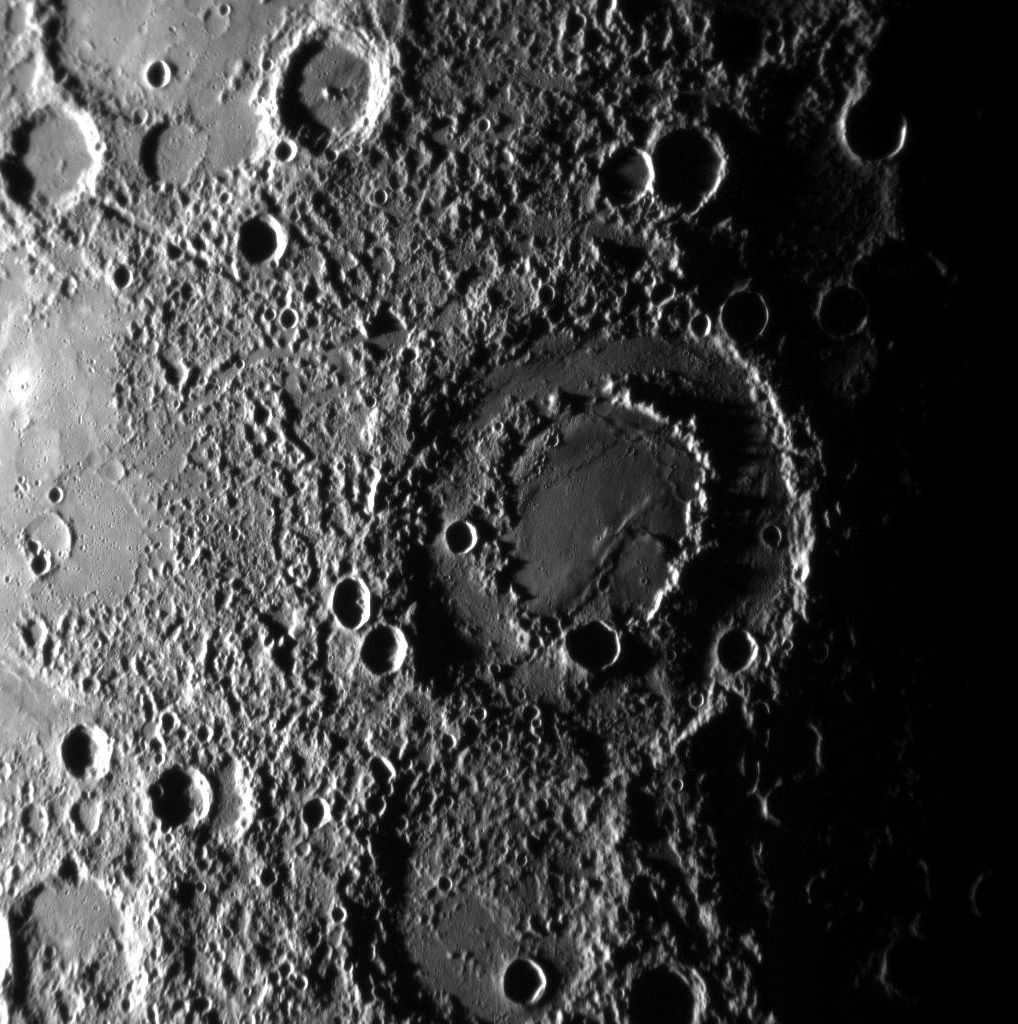
The Voyager Program: Exploring New Frontiers
The American Voyager program stands as a testament to the incredible achievements of interplanetary exploration. Launched in 1977, the two spacecraft, Voyager 1 and Voyager 2, embarked on a groundbreaking mission to Jupiter and Saturn, forever changing our understanding of the solar system.
Voyager 1 made history as the first spacecraft to capture detailed images of Jupiter and Saturn’s moons. Its groundbreaking discoveries paved the way for future exploration and ignited a scientific revolution. On the other hand, Voyager 2’s journey brought it up close to Europa and Ganymede, two of Jupiter’s largest moons from the esteemed Galilean group. The data collected by the spacecraft sparked the hypothesis of liquid oceans beneath the icy crust of these moons, challenging our perception of extraterrestrial life.
Voyager 2 has the distinction of being the first and only AMS to explore Uranus and Neptune. During its flyby of these planets, the spacecraft captured and transmitted numerous images back to Earth, providing valuable insights into the planets’ rings and moons. On Uranus, Voyager 2 even discovered 11 previously unknown moons, while on Neptune’s moon Triton, it made the astonishing discovery of active geysers, which greatly surprised the scientific community.
However, the accomplishments of the Voyager missions do not end there. Once they had completed their studies of the planets, the spacecraft continued their journey, venturing even further into the outer reaches of our solar system. Voyager 1, in particular, achieved the distinction of becoming the fastest man-made object ever launched from Earth. It also became the first human-made object to enter interstellar space, effectively leaving our solar system. This allowed scientists to determine that the onboard equipment was still functioning, even in the harsh conditions of interstellar space.
The distinctive position of Voyager 1 will provide scientists with the opportunity to investigate the characteristics of the interstellar medium until 2025 (when the plutonium fuel is projected to be depleted). Additionally, astrophysicists are intrigued by the fact that Voyager 2 is also journeying towards the outer reaches of the solar system and is expected to enter interstellar space within the next few years. This will enable independent observations and measurements, facilitating a comparison with the findings of Voyager 1.
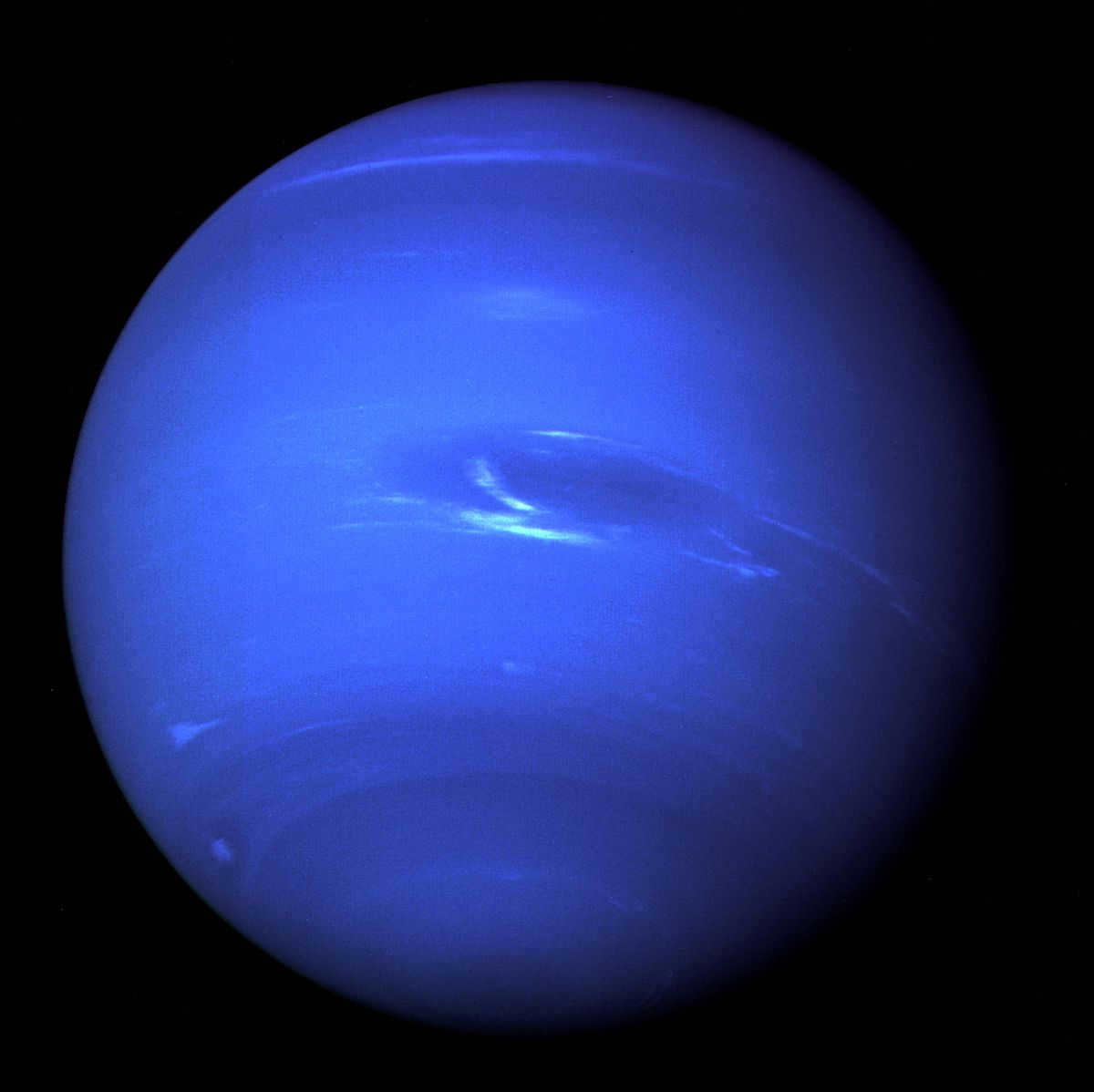
Galileo Mission
The primary objective of the AMS Galileo mission, launched by NASA in 1989, was to conduct a comprehensive study of Jupiter and its moons. The mission was a resounding success, as the spacecraft successfully completed all of its planned scientific investigations.
The Galileo spacecraft made history by becoming the first and only spacecraft to enter orbit around Jupiter. Additionally, the AMS’s high-resolution images of Jupiter’s moons, captured by Galileo, provided evidence to support the theory that some of these moons, such as Europa, may possess subsurface oceans.
In 1994, the Galileo spacecraft witnessed the impact of a comet into Jupiter’s atmosphere, marking the first recorded observation of such an event. The spacecraft’s photographs revealed large dark scars in the planet’s outer cloud layers, resulting from the collision.
The year 2003 marked the conclusion of the Galileo program, with the subsequent disposal of the orbiting module in Jupiter’s unforgiving atmosphere, resulting in its incineration.
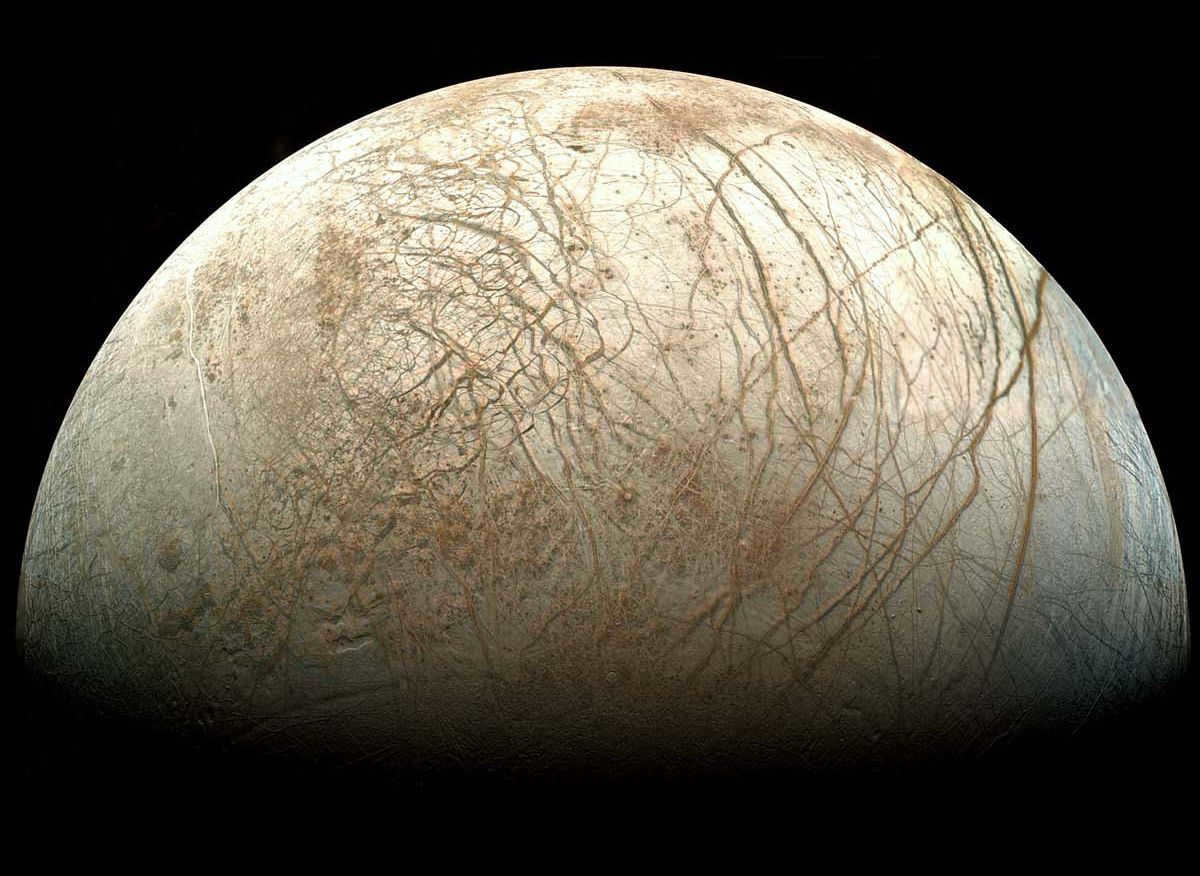
What planets can be colonized?
Venus, our neighboring planet, is known as one of the hottest planets in our solar system. This is due to its dense clouds, which trap heat in the atmosphere, resulting in an average temperature of 477 °C. However, if we can find a way to address the cloud issue, it is possible to create Earth-like conditions on Venus. Additionally, compared to other planets, Venus is relatively more accessible for colonization.
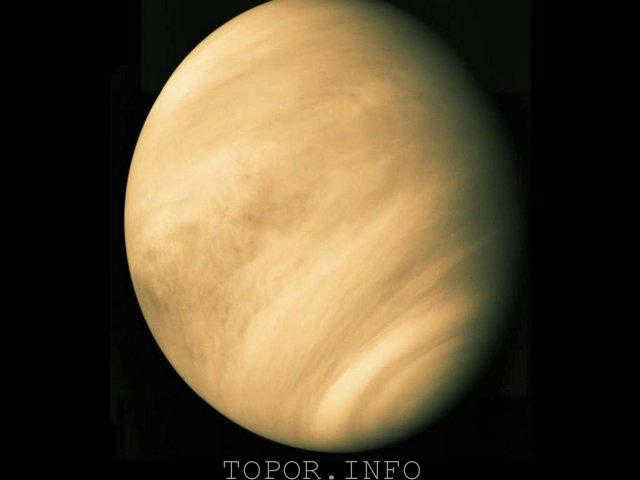
Venus is commonly referred to as Earth’s twin, given its striking similarities in diameter and mass.
In addition to addressing the challenge of extreme temperatures, scientists will also need to tackle the issue of water scarcity on Venus. While no water has been detected on the planet’s surface, there remains a glimmer of hope that it may exist deep within its depths. Furthermore, the absence of clouds leaves Venus vulnerable to radiation due to its weak magnetic field, which is another cause for concern.
Scientists have already devised a plan to initiate active terraforming on Venus. One approach involves installing specialized shields between the planet and the Sun, which would decrease the amount of solar energy reaching Venus and consequently lower its temperature. Alternatively, Venus could be bombarded with comets and asteroids containing ice, although this method is less elegant. Another interesting possibility is that by manipulating the planet’s rotation, it may be possible to shorten the length of a Venusian day, which currently lasts 58.5 Earth days. Once the planet’s hydrosphere begins to form, it could be suitable for introducing algae and other terrestrial microorganisms.
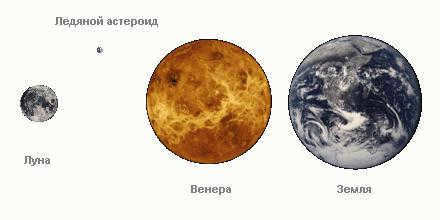
Therefore, the possibility of colonizing Venus is not out of the question, although it may not happen in the near future, as humanity has currently set its sights on another planet.
Mars, on the other hand, is the leading contender for the first planet to be colonized by humans. According to scientists, the Red Planet offers the greatest potential for creating sustainable living conditions for humans at present.
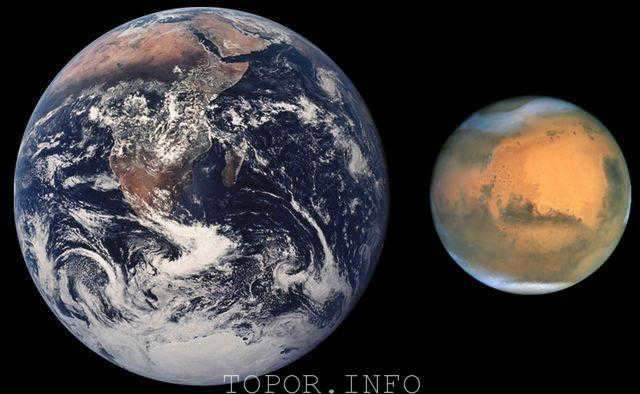
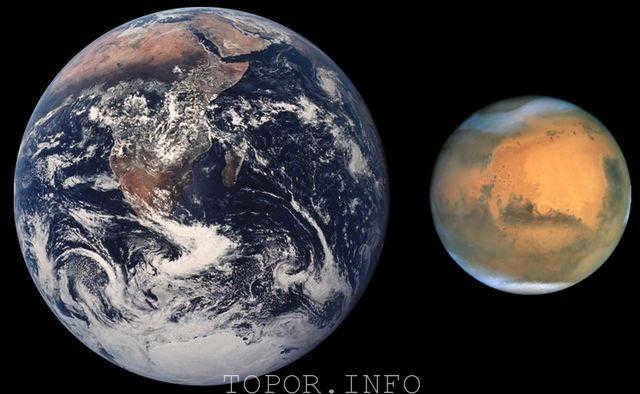


Mars has a distinct advantage over other planets in the solar system due to its ability to produce food resources, oxygen, and building materials on-site. This sets it apart from other potential options for colonization. The ability to terraform Mars will eventually create Earth-like conditions, making it easier for humans and other organisms to adapt. Another benefit is that the Martian day is only 24 hours and 39 minutes, which will be more compatible with human and plant life.
The recent findings from NASA have confirmed the presence of water on Mars, which is undoubtedly a significant discovery. Water is essential for life, and although it exists in a frozen form on Mars, there are indications of vast underground reserves. Moreover, with proper treatment, the soil on Mars has the potential to support the growth of terrestrial plants.


The Red Planet is being seriously considered as a potential location to establish a “Cradle of Mankind” in the event of a global catastrophe on our own planet. While this may be a distant possibility, currently Mars is primarily viewed as a place where fascinating research and experiments can be conducted, which would be too dangerous to carry out on Earth.
Interestingly, there is a theory suggesting that our civilization originated on Mars but had to relocate to Earth.
One of the main challenges that need to be addressed includes the weak magnetic field of Mars, its thin atmosphere, and gravity that is only 38% of that on Earth.
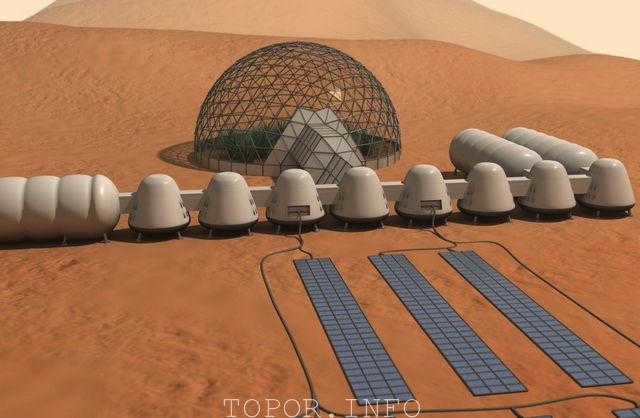
Currently, the high cost of spaceflights is impeding research on Mars. It is unfortunate that governments prioritize spending billions on weapons instead of investing in the exploration of new worlds. Hopefully, we will be able to establish cities with their own atmosphere on Mars before irreversibly polluting our own planet.
A journey to Mars typically takes around 9 months, but there are plans to develop new engines in the near future that could significantly reduce this duration. When compared to a trip to Mercury, the energy costs are relatively minimal, not to mention the immense expenses involved in interstellar travel.
All things considered, Mars offers the best balance between habitability and proximity to Earth.
Mercury is seen as a potential candidate for colonization among other celestial bodies in our solar system. The most suitable area to establish a population would be the planet’s polar region, which is home to ice caps and experiences minimal fluctuations in daily temperatures. Unlike other planets, Mercury benefits from its close proximity to the Sun, meaning it will have no issues with energy supply. Additionally, this planet is abundant in valuable resources, although it lacks in the food department… One advantage of Mercury is its possession of a magnetic field, which provides some protection against the solar wind and cosmic radiation, albeit not as effectively as Earth.
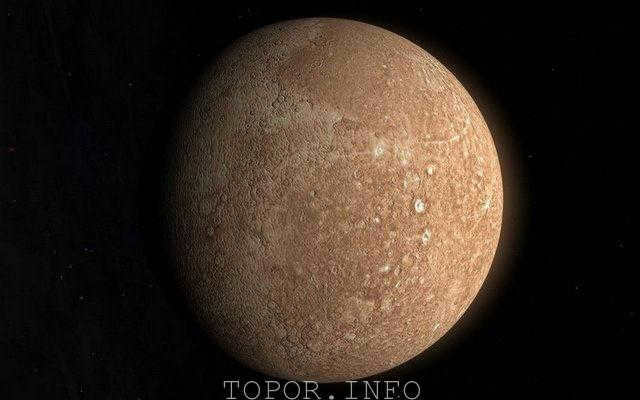
However, due to its close proximity to the Sun and the absence of a substantial atmosphere, Mercury is not particularly desirable for colonization. Additionally, the length of a day on Mercury is 176 Earth days, which is also a disadvantage. Terraforming under these conditions would be impractical, so the best option would be to establish an underground colony. Nonetheless, the process of enabling human habitation on Mercury would be time-consuming and require a significant amount of labor. Furthermore, due to the Sun’s gravitational pull, the journey itself would be extremely energy-intensive and hazardous.
Indeed, Titan, a moon orbiting Saturn, may not meet the criteria for being classified as a planet, but it undeniably stands out on our roster in a vibrant manner. It stands as one of the select few locales within our solar system, apart from Earth, of course, where the existence of life in its most rudimentary form is currently deemed feasible. Based on ongoing research, Titan boasts an inventory of essential elements for sustaining life, including carbon, hydrogen, nitrogen, and oxygen. Moreover, its adequately dense atmosphere ensures a reliable shield against the perils of cosmic radiation. Titan encompasses all the prerequisites for supporting a colony, ranging from the availability of water to the potential for harnessing rocket fuel. From an economic standpoint, Titan holds great allure due to its copious reserves of liquid carbon, which surpass the entirety of Earth’s oil deposits by several orders of magnitude. Furthermore, these bountiful resources lie readily accessible on the moon’s surface, taking the form of vast lakes.
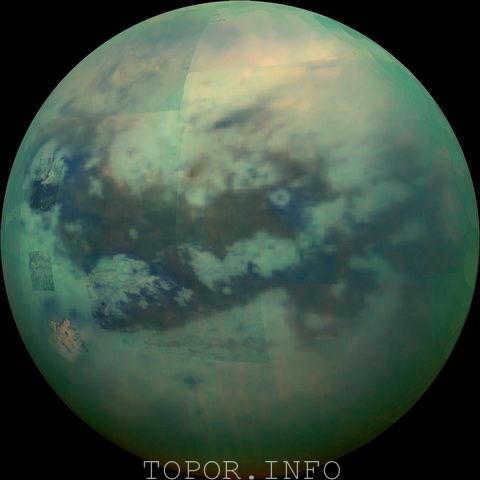
Humans on Titan would face several challenges due to the planet’s unique conditions. The low pressure and temperature, as well as the presence of hydrogen cyanide in the atmosphere, would require the use of specialized spacesuits for the first few days. Additionally, the gravity on Titan is significantly lower than Earth’s, which could have detrimental effects on the human body. Furthermore, the planet is prone to violent earthquakes.
There is a strong likelihood that Titan will become the third celestial body, following the Moon and Mars, where humans will successfully land. Currently, it is primarily viewed as a potential source of resources that are becoming scarce on Earth.
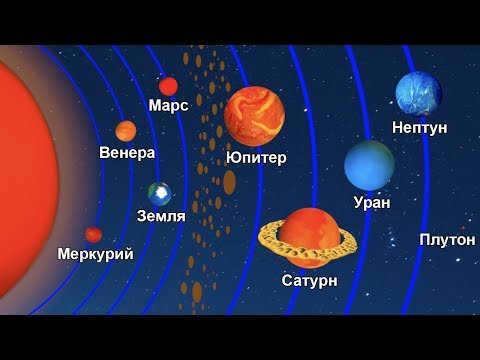

The vastness of the universe is truly unfathomable. Spanning over 150,000 million million light years (which would take an unimaginable amount of time to traverse at a speed of 300,000 kilometers per second), it is a home to an astonishing number of galaxies, totaling approximately 2 million million million galaxies.
Consider the fact that a typical galaxy, like our own, may contain around 400 billion stars. Each one of these stars potentially hosts at least one planet in orbit, leading to a mind-boggling estimate of there being a quadrillion planets in the Universe.
Not only does this revelation demonstrate that the likelihood of being alone in the universe is nearly impossible (with 1 out of every 5 stars similar to our Sun potentially hosting habitable planets), it also suggests that there exists an immense array of celestial worlds, each one possessing its own distinctive qualities.
Nonetheless, astronomers have successfully categorized the 4284 planets discovered thus far (as of October 5, 2020) into specific groups after thorough analysis. Today, we will delve into this classification, as well as define the precise characteristics that distinguish a planet and explore the various types of planets that exist.
What Defines a Planet?
A planet is an astronomical object that revolves around a star and possesses sufficient mass to maintain a spherical shape due to its own gravitational force. Although rotation can cause some deformation, it is not significant enough to alter the planet’s overall shape. However, planets do not undergo nuclear fusion reactions in their cores like stars, so they do not emit light on their own.
Yet, if this is the definition, why aren’t asteroids considered planets? And why has Pluto lost its planetary status? The answer lies in an additional requirement: a planet must have cleared its orbit from other celestial bodies. In other words, it must be the dominant object in its orbital path around the star.
To put it differently, a planet is defined as a celestial body that orbits around its star without any interference from other objects. In order to be classified as a planet, the celestial body must be able to clear its orbit by avoiding any collisions with other objects. If the celestial body is too small and fails to clear its orbit, it will not be considered a planet. However, if it successfully meets these criteria, it can be classified as a planet.
Regarding how they form, the process is still not completely understood. However, it is known that the formation of planets holds the key to understanding the nature of the various types of planets we will explore later on.
To comprehend this, we must delve into nebulae. Nebulae are vast interstellar regions (unaffected by the gravitational pull of any star) that span hundreds of light years in diameter. They are composed of gases and cosmic dust. Essentially, a nebula is a colossal cloud of gas and dust, spanning millions upon millions upon millions of kilometers.
At one point in time, our solar system (over 4.5 billion years ago) was a nebula. In fact, all stars and consequently planets were once gas and dust particles floating aimlessly in space.
However, at a certain stage, the gas and dust particles of a nebula, which are not influenced by external gravitational forces, begin to be drawn towards each other. This attraction is particularly strong in the central region of the cloud, causing the particles to clump together and create more condensed areas that attract even more particles under the influence of gravity.
Over millions of years, this situation undergoes a transformation, becoming extremely compressed and subjected to extremely high temperatures and pressures. In the midst of this transformation, a star is born at the core of the nebula. Even after the star’s formation, a disk composed of dust and gas remains in orbit around it.
This disk continues to rotate and compress, causing the gas and dust particles to undergo the same process of attraction. As they collide with one another, gravity eventually leads to the formation of massive bodies from this disk – planets.
Depending on the proportion of gas to solid dust, we will come across a particular kind of planet. This classification is determined by the distance from the star and the planet’s size, which will be discussed below.
What are the various categories of planets?
Now that we have a clear understanding of what defines a planet (and what does not) and how they are formed, we can proceed to examine the different types. Although our solar system only contains “just” 8 planets, we can already observe representatives from various groups.
As we mentioned earlier, a total of 4,284 planets have been discovered beyond our solar system. While this number may seem low considering the vast number of celestial bodies in our galaxy (not to mention the entire Universe), it has still been sufficient to classify them into the following categories.
1. Terrestrial Planets
A terrestrial planet, also referred to as a rocky planet, is a celestial body with a solid rocky surface. These planets have a high density, indicating their relatively small size (for comparison, Earth has a diameter of 12,742 km). Examples of terrestrial planets include Earth, Mars, Venus, and Mercury. These planets are typically found in close proximity to their parent stars and are predominantly composed of rocky materials.
This characteristic can be attributed to the process of planet formation. During the formation of star systems, solid particles were more readily drawn towards the center of the nebula, resulting in a higher concentration of solids in the disks surrounding the stars compared to gases.
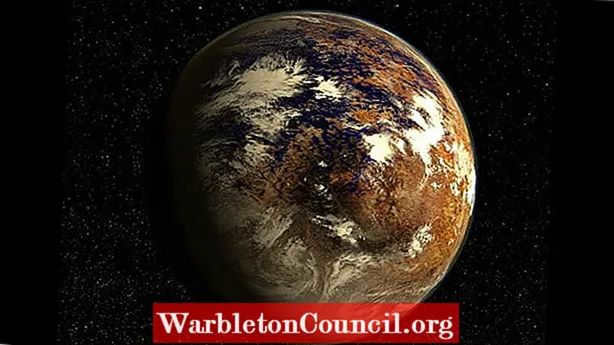
Proxima b, a planet made of rock that orbits the star closest to our solar system, bears a striking resemblance to Earth.
2. Giant gas planets
These celestial bodies are given the name “gas giants” because, for the most part, they consist entirely of gas (excluding the core). In other words, gas giants lack solid or icy surfaces.
They are primarily composed of 90% hydrogen and heliumjust like stars. In fact, they are often referred to as “failed stars” because they possess all the qualities of a star except for the most significant one. That is, their mass is not sufficient to initiate nuclear fusion reactions within their core. Nevertheless, due to the gravitational pull they exert, they typically possess dust disks and numerous satellites in orbit.
Although they differ in many ways, one common feature of these planets is their significantly lower density. However, what sets them apart is their immense size. Take Jupiter, for example, which is a perfect illustration of this phenomenon (along with Saturn). With a diameter of 139,820 km, Jupiter dwarfs Earth’s 12,732 km diameter.
The majority of the exoplanets we have discovered fall into this category, although it remains unclear whether this is because they truly are the most abundant type in the universe or simply because their larger size makes them easier to detect compared to rocky planets.
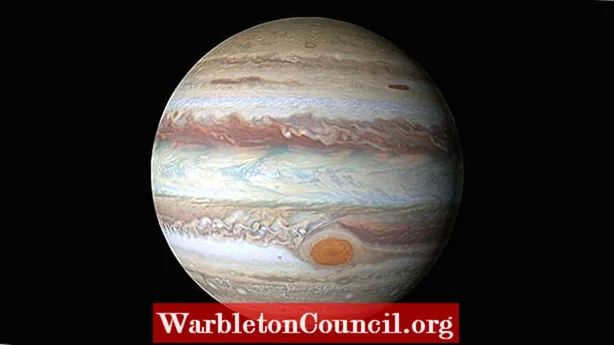
3. Ice Giants
Ice giants bear a striking resemblance to gaseous giants, but differ in one significant aspect. Their hydrogen and helium composition accounts for only 10% (in contrast to gas giants, which consist of 90% of these elements), resulting in the majority of their mass being comprised of heavier substances such as nitrogen, oxygen, carbon, or sulfur. Currently, they lack a solid surface.
This composition grants them a higher density, placing them in between solids and gases in terms of size. Neptune, a prime example of this category (the other being Uranus), boasts a diameter of 24,622 km.
These celestial bodies maintain temperatures around -218 °C, causing their compounds (in addition to water) to freeze, resulting in their composition being predominantly composed of solid, frozen forms of ammonium, water, and methane.
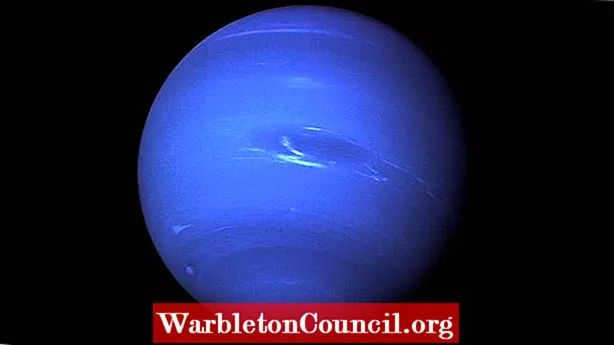
4. Dwarf planets
Dwarf planets are celestial bodies that are in a grey area between being classified as planets or satellites. Like planets, they orbit a star rather than another planet, they have enough mass to be spherical in shape, and they do not emit their own light. However, they do not meet the criteria for being classified as planets because they do not clear their orbit of other celestial bodies.
This lack of ability to clear its orbit is due to the dwarf planet’s small mass. It simply does not have enough mass to remove other objects from its path. A prime example of this is Pluto, which has a diameter of 2376 km and is too small to be considered a full-fledged planet.
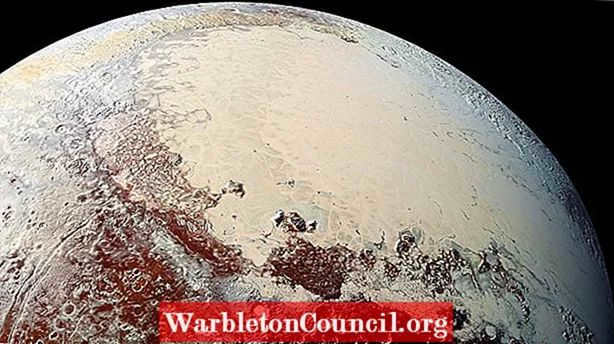
5. Planets in the ocean
In this section, we will explore the various types of planets that exist beyond our solar system. One intriguing category is ocean planets, which can be described as rocky planets completely covered by water, either on the surface or below.
Unlike Earth, which is not considered an ocean planet due to only 71% of its area being covered by water, these unique planets have their entire surface enveloped in water. Detecting the presence of liquid water on other planets is a challenging task, as we currently rely on indirect methods such as analyzing the composition of their atmospheres using spectrometric techniques. Nonetheless, the discovery of ocean planets is of great significance in the ongoing search for extraterrestrial life.
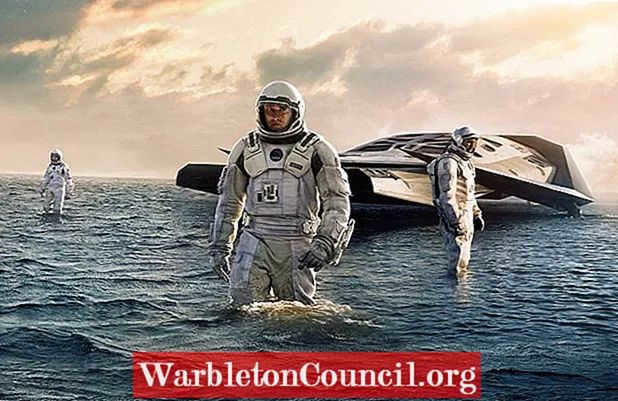
The movie Interstellar features a group of explorers who embark on a journey to an ocean planet with the hope of discovering a new habitable world for humanity.
6. Planets in Interstellar Space
Although it may seem daunting, there exist planets that are condemned to drift aimlessly through space for eternity. These interstellar planets, which can belong to any of the previously known types, have either been expelled from their original orbits or have formed independently and therefore do not revolve around any stars.
